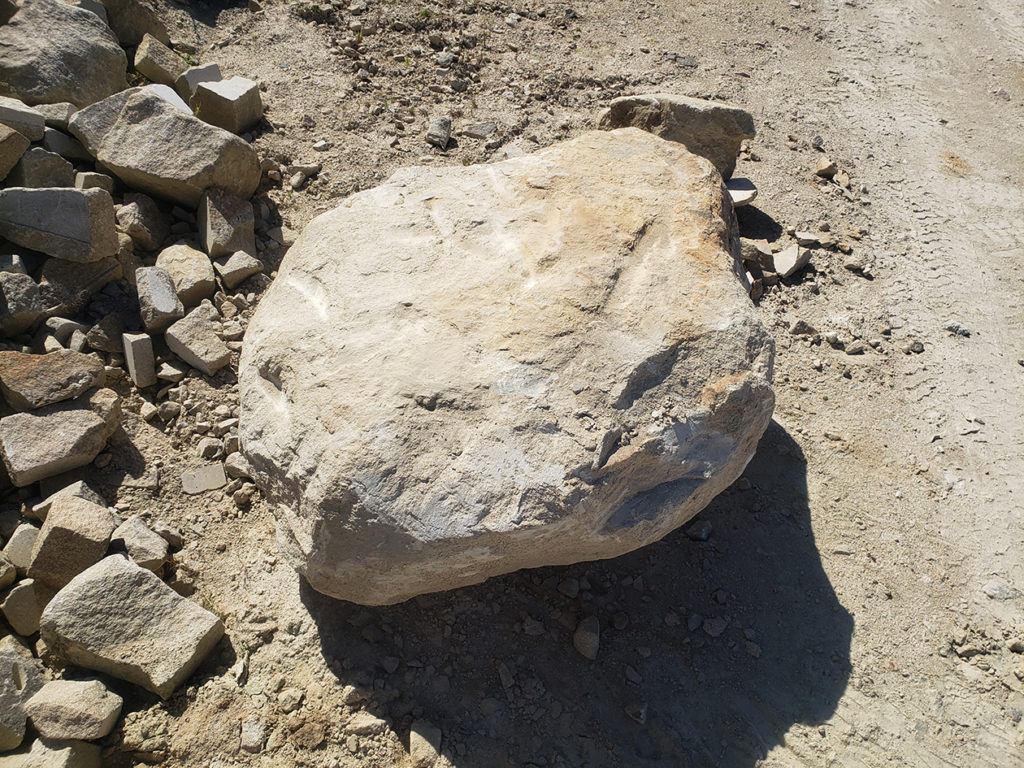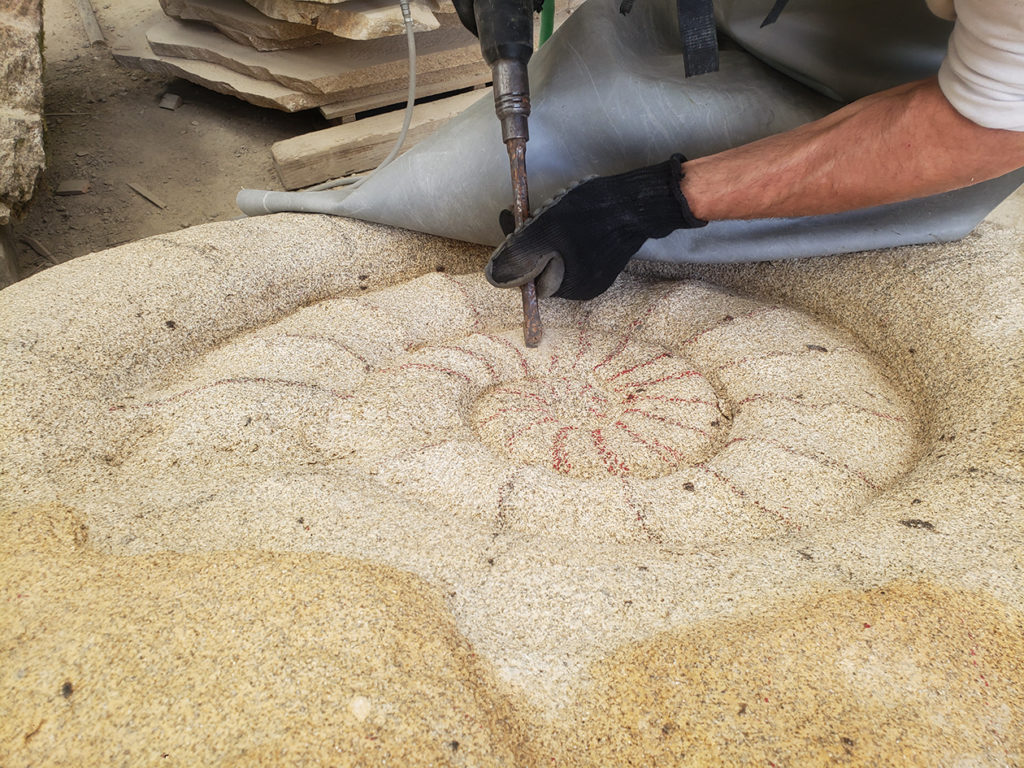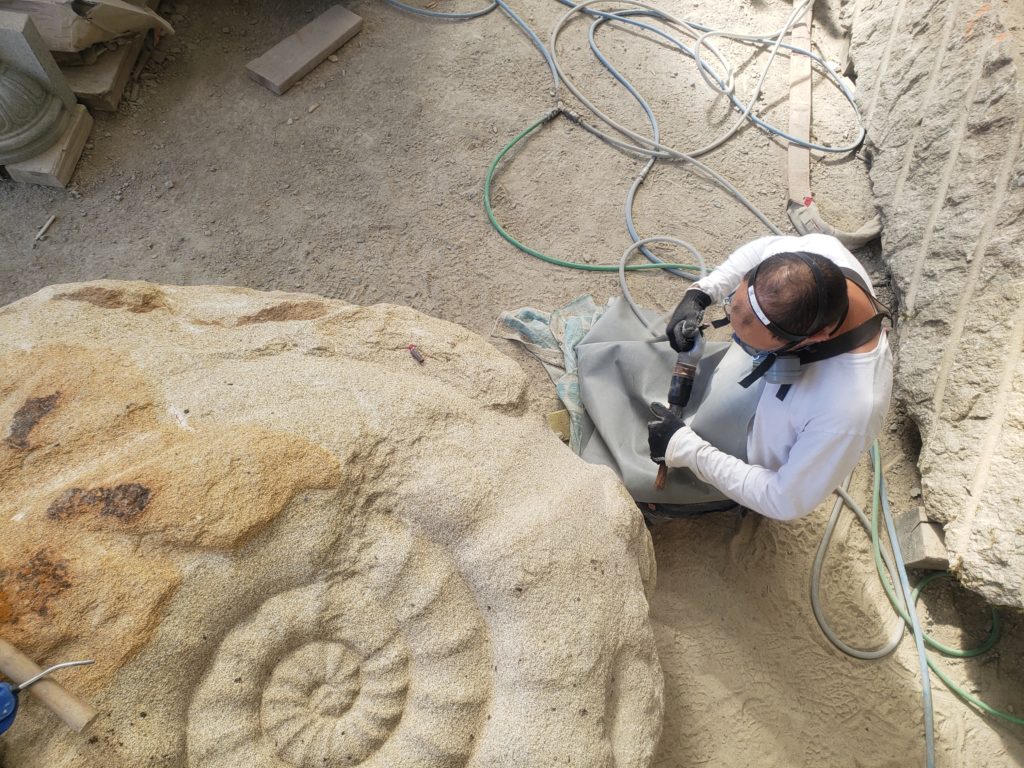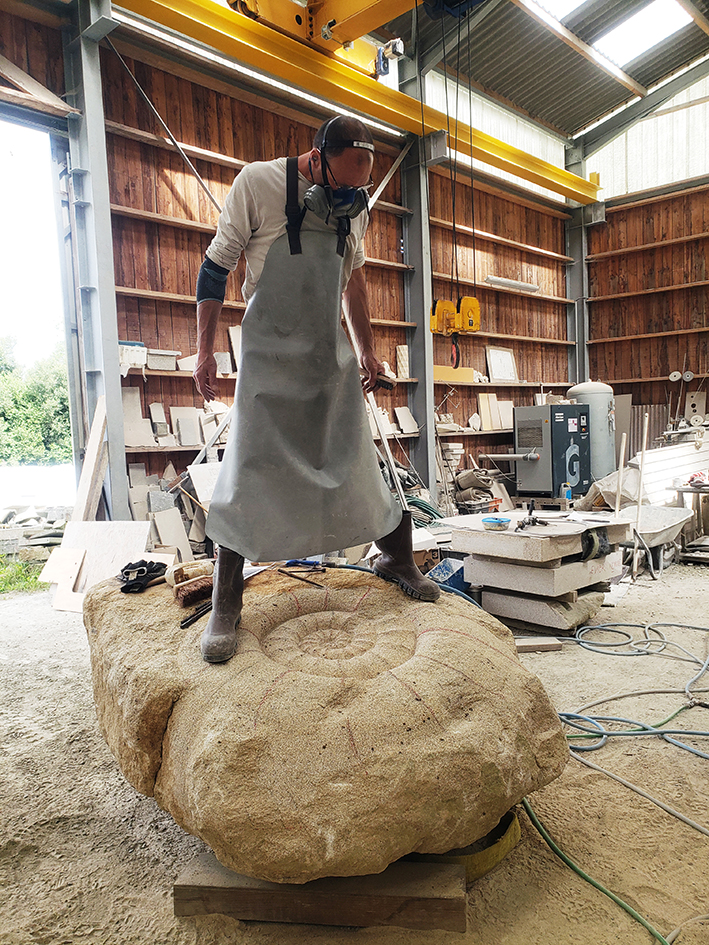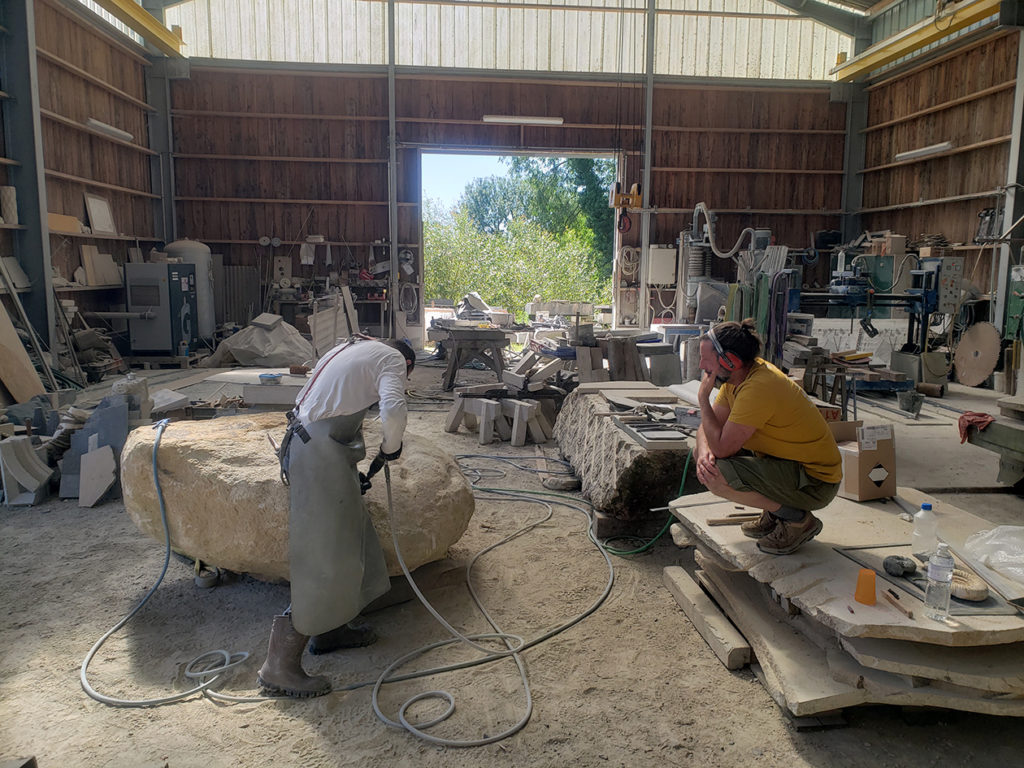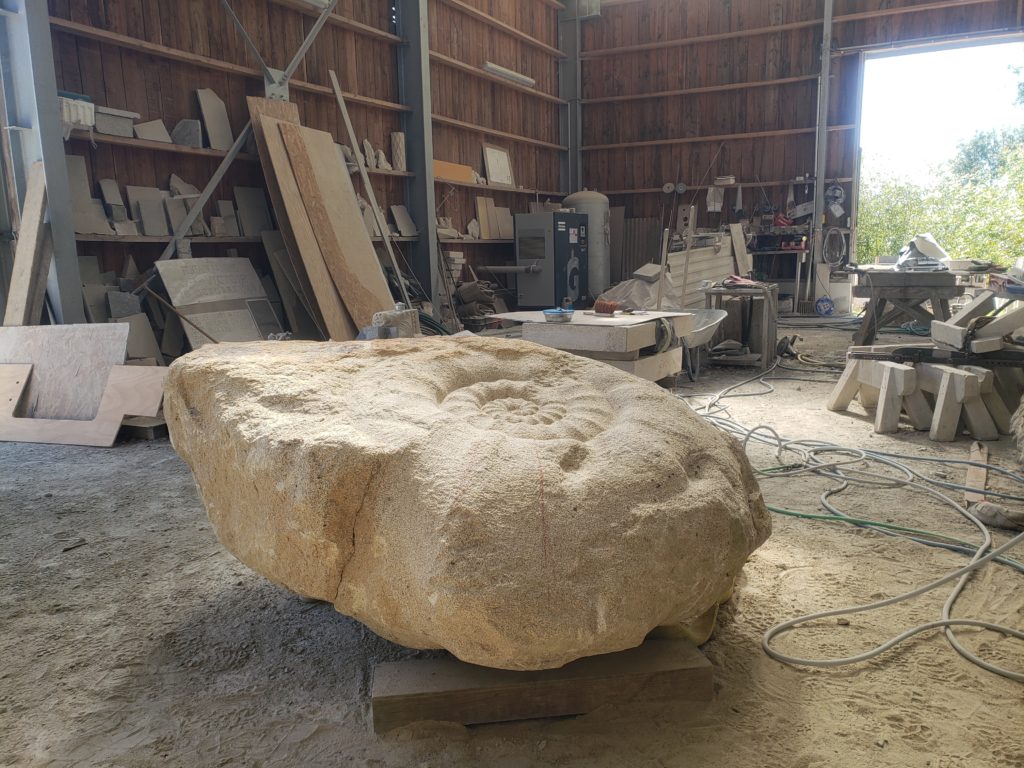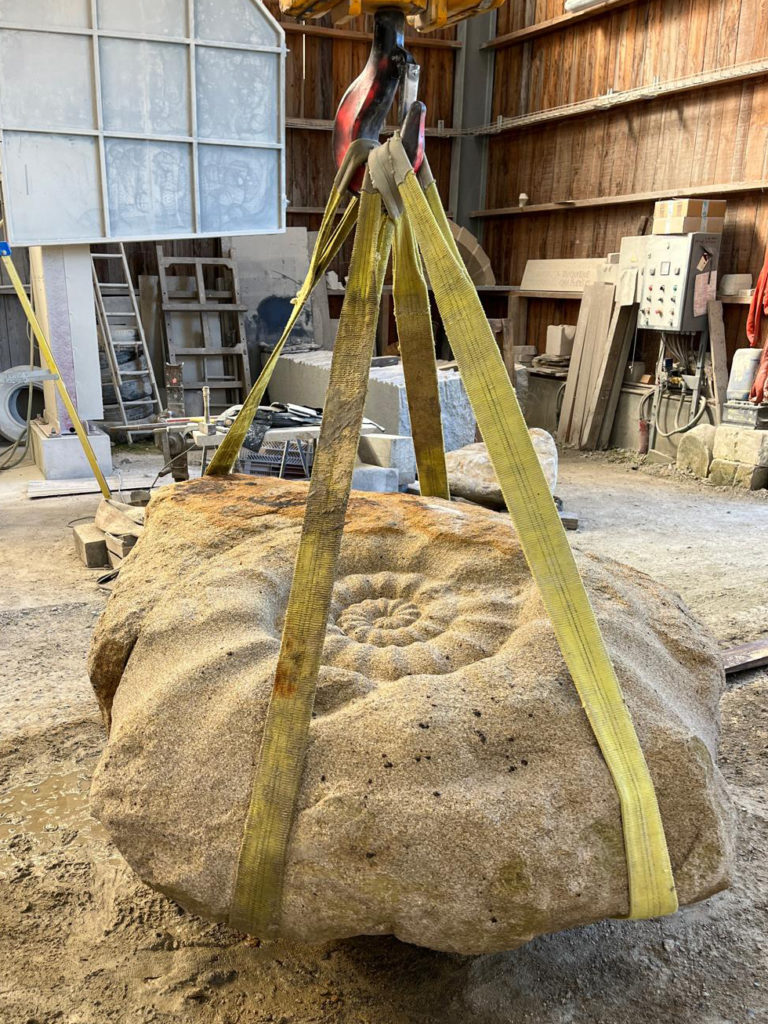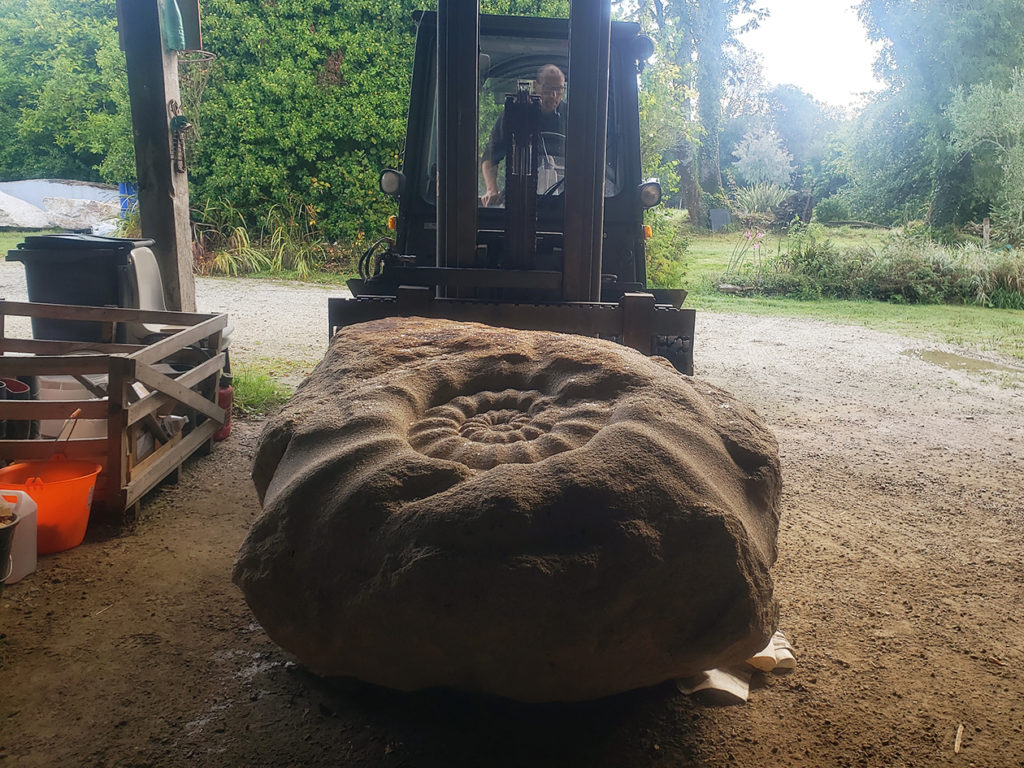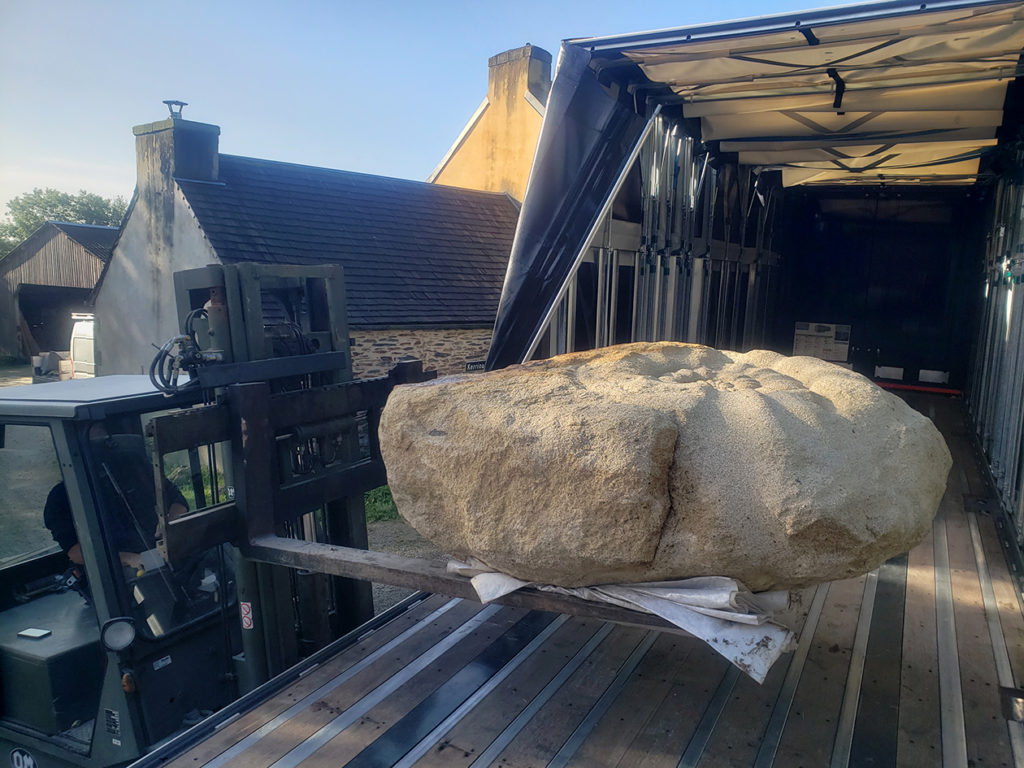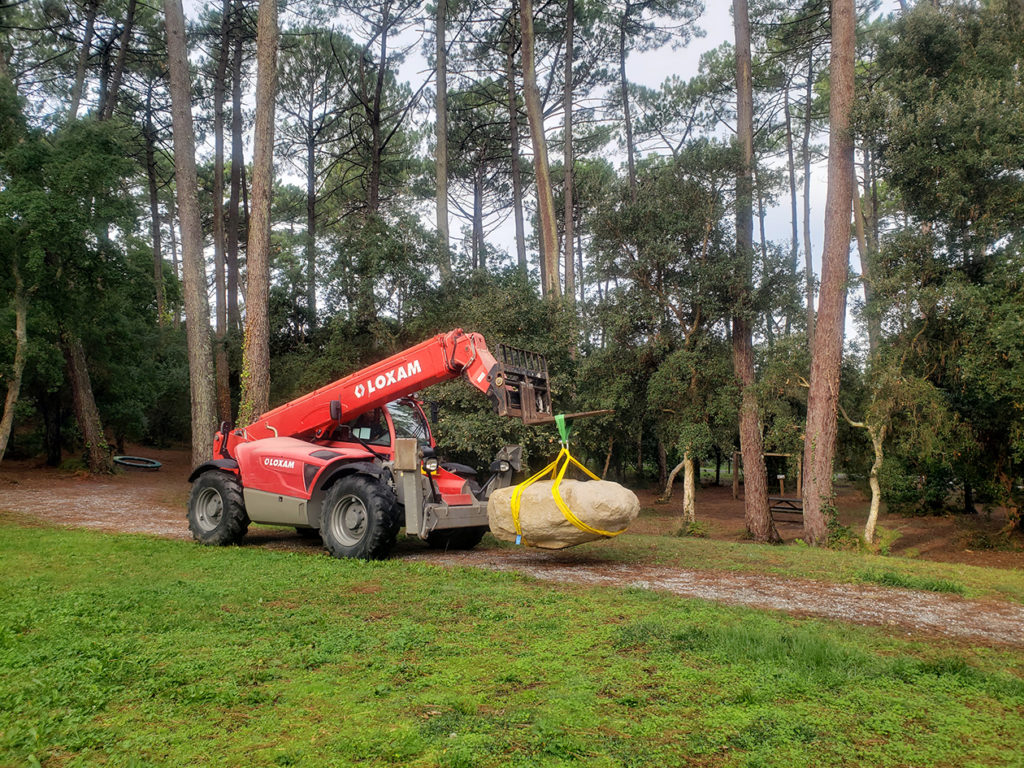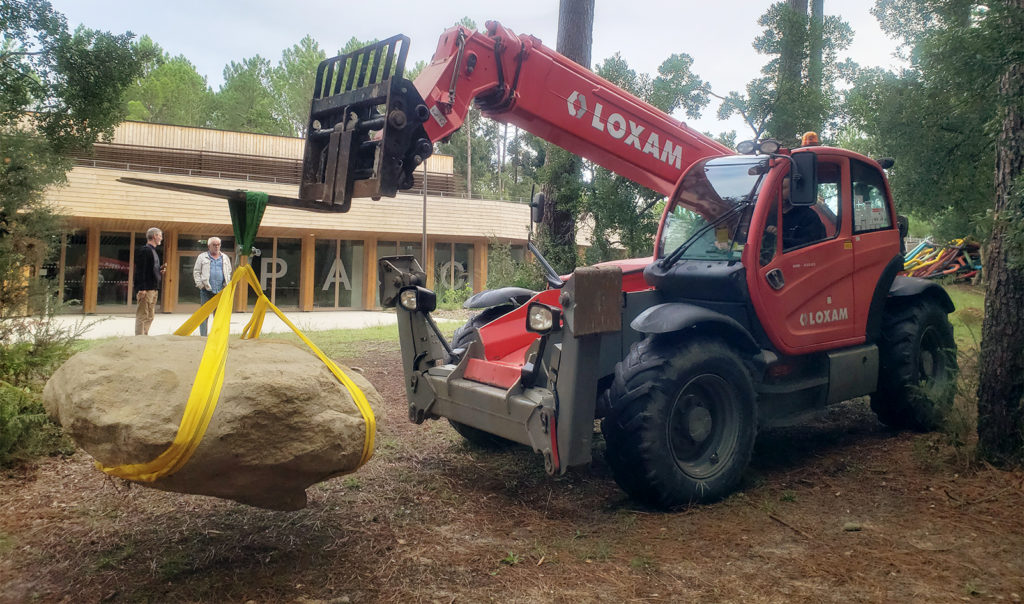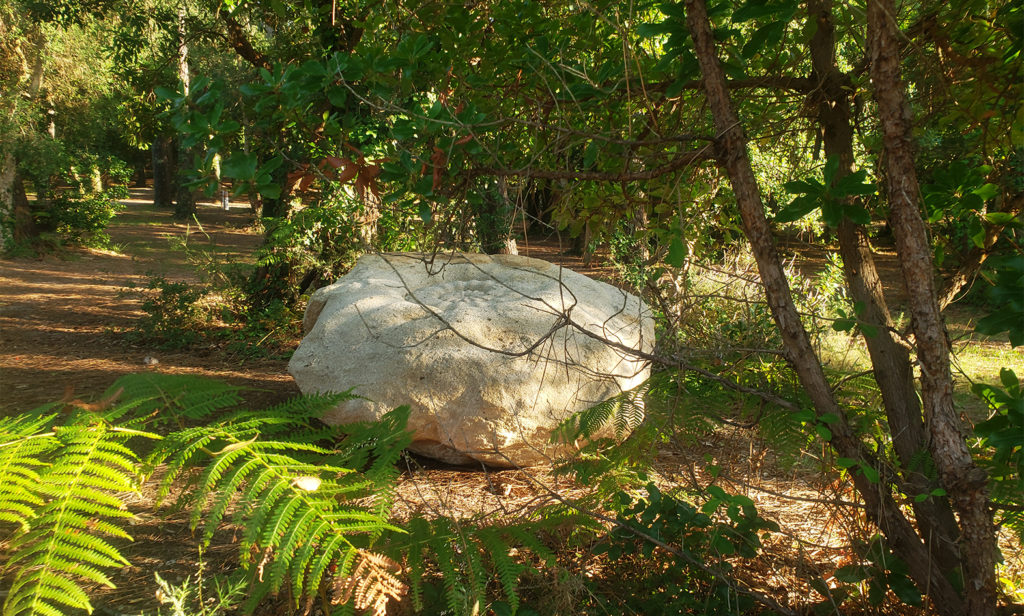Xénolithe
Granit, 200 x 180 x 90 cm, 3200 kg, 2025
Permanent work created as part of a “1% artistic” commission relating to the construction of the PARCC art center by the MACS Community of Communes in Labenne in the Landes.
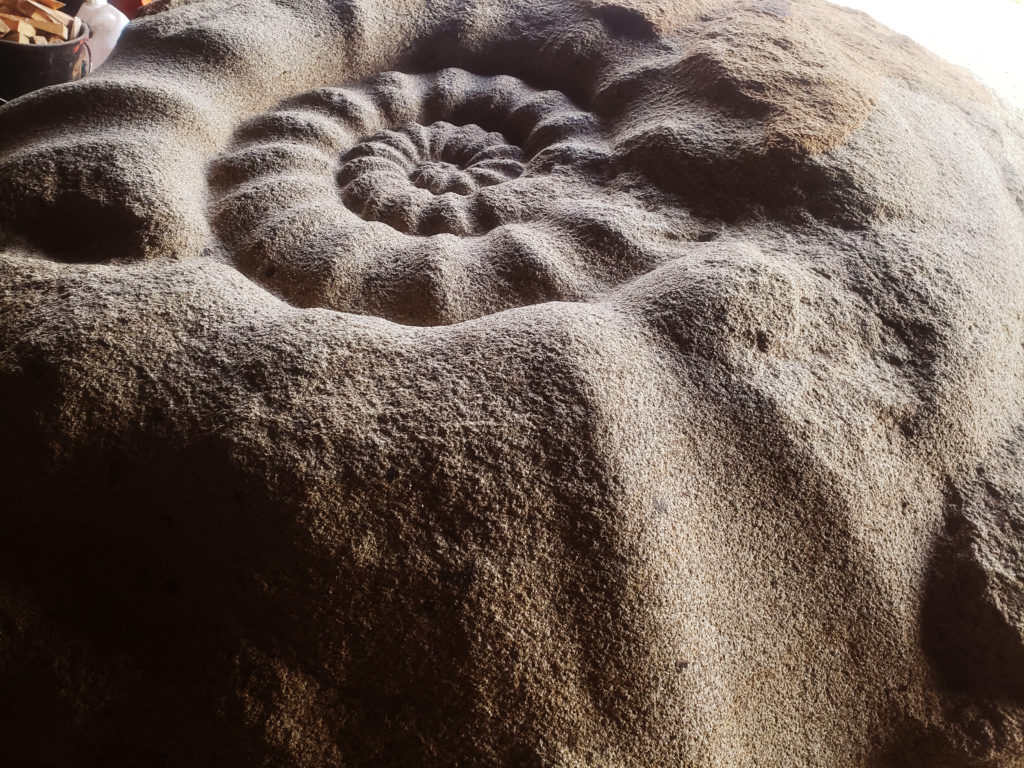
Stone cutting: Christophe Chini
Production, installation: 47NORD
Inspired by the proximity of the ocean, Xenolith is a sculpture from which a giant ammonite emerges, carved from a block of granite. This is a mineral anomaly, since fossils cannot be preserved in this type of rock. However, the appearance of the first ammonites coincides with the age of this stone’s formation (around 350 million years ago).
Thus, Xenolith suggests a reflection on the impermanence of life on Earth, inviting contemplation by evoking distant biological and geological times.
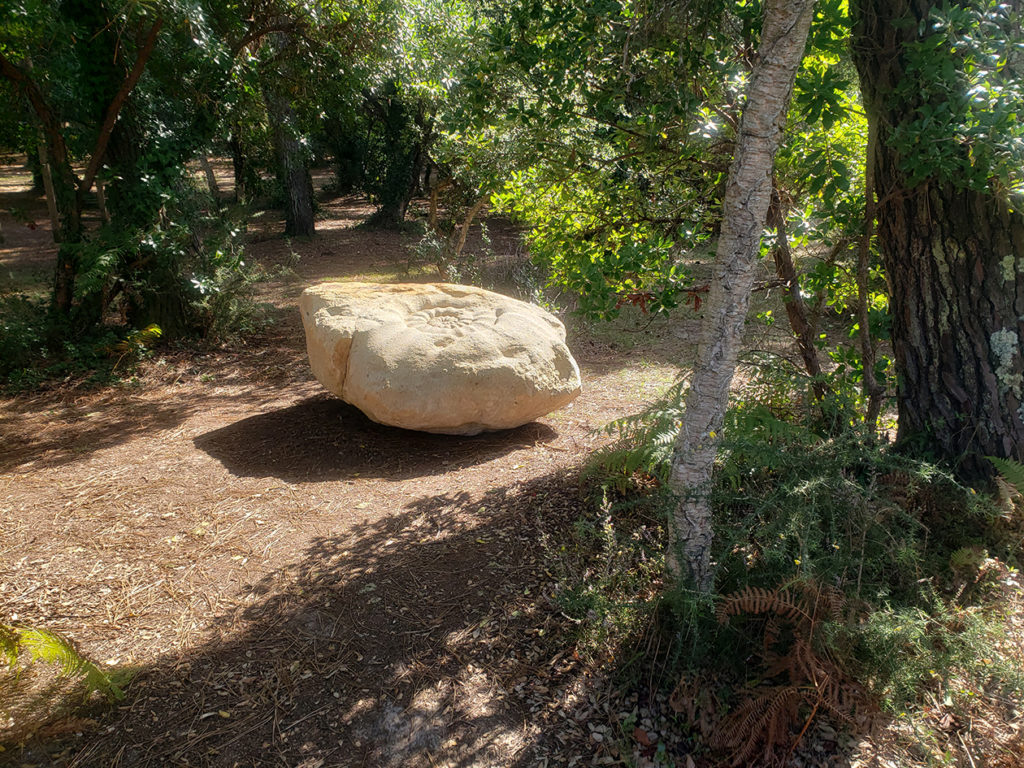
“The ammonite of all sizes, from the lens to the mill wheel, imposes the mark of its cosmic spiral everywhere.”
Roger Caillois
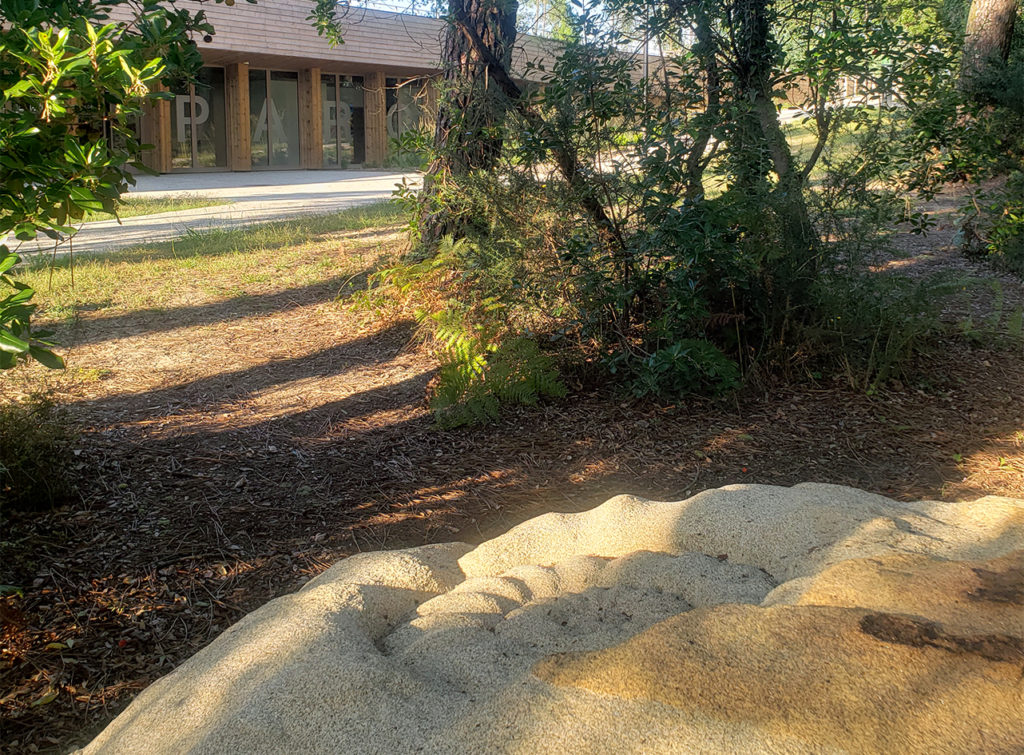

Reflecting the instability of the surrounding beaches, where blockhouses are buried or extracted from their sand beds, ground movements have uncovered a rock from which a giant ammonite emerges. Coming from the oceans that once covered the site, this monumental fossil has been brought to the surface.
The ammonite is a cephalopod mollusk that appeared during the Devonian Period (419 to 359 million years ago) and became extinct at the end of the Jurassic Period, 65 million years ago. This species inhabited the seas for nearly 325 million years, and a wide variety of fossilized specimens have survived.
Fossils, being the petrified imprint of extinct animals and plants, evoke a past life, one that is no longer alive.
This stone questions us about impermanence, the fragility of all life on Earth, and the traces left by ancient beings.
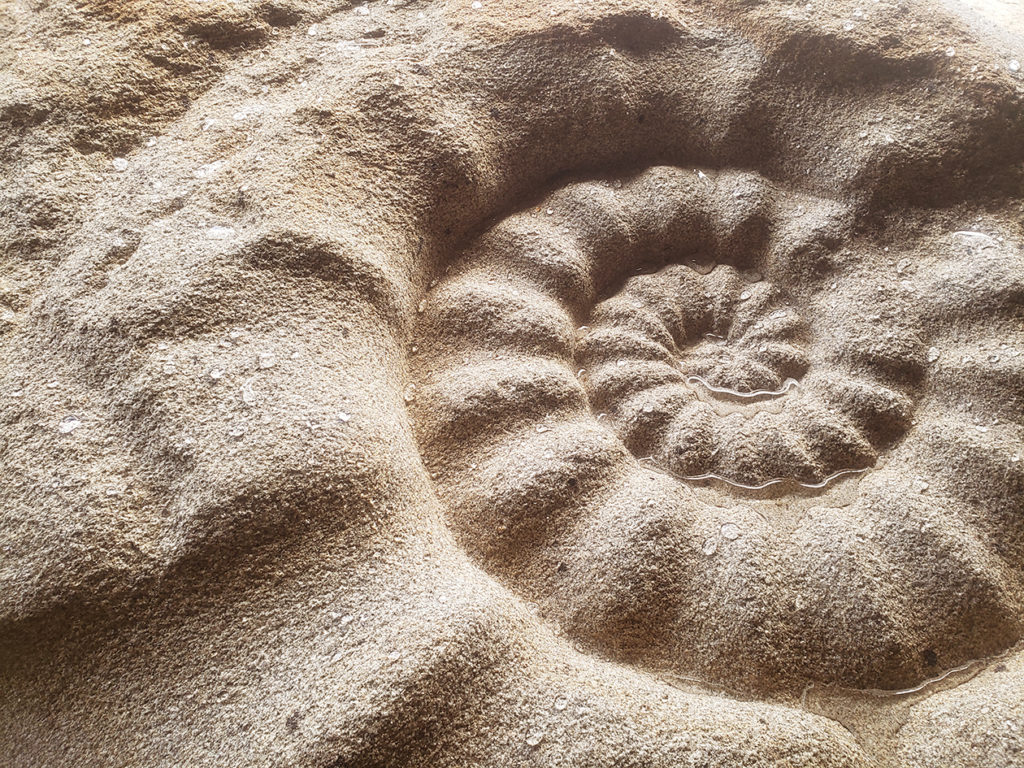
From the Ancient Greek xenos (foreign) and lithos (stone), the term xenolith is used in geology to describe the inclusion of one igneous rock within another.
It is indeed a foreign rock, a foreign body, that is in question here.
This block is a granite (igneous rock) that geologically cannot be found in the Landes region, nor could it contain a fossil, since organisms can only be preserved in sedimentary substrates/strata.
However, the appearance of the first ammonites coincides with the age of formation of this granitic rock (around 350 Ma).
This creature is therefore an anomaly, an extinct animal carved from an extremely resistant material.
A definite interest in biodiversity and a thousand-year-old geological history inspired this sculpture, which spans several time periods. It thus evokes a past, historical time, and another yet to pass, that of contemplation.
By invoking a principle of inscription in the landscape blended with poetic fiction, Xénolithe invites reflection on the ecosystems that make up our planet.
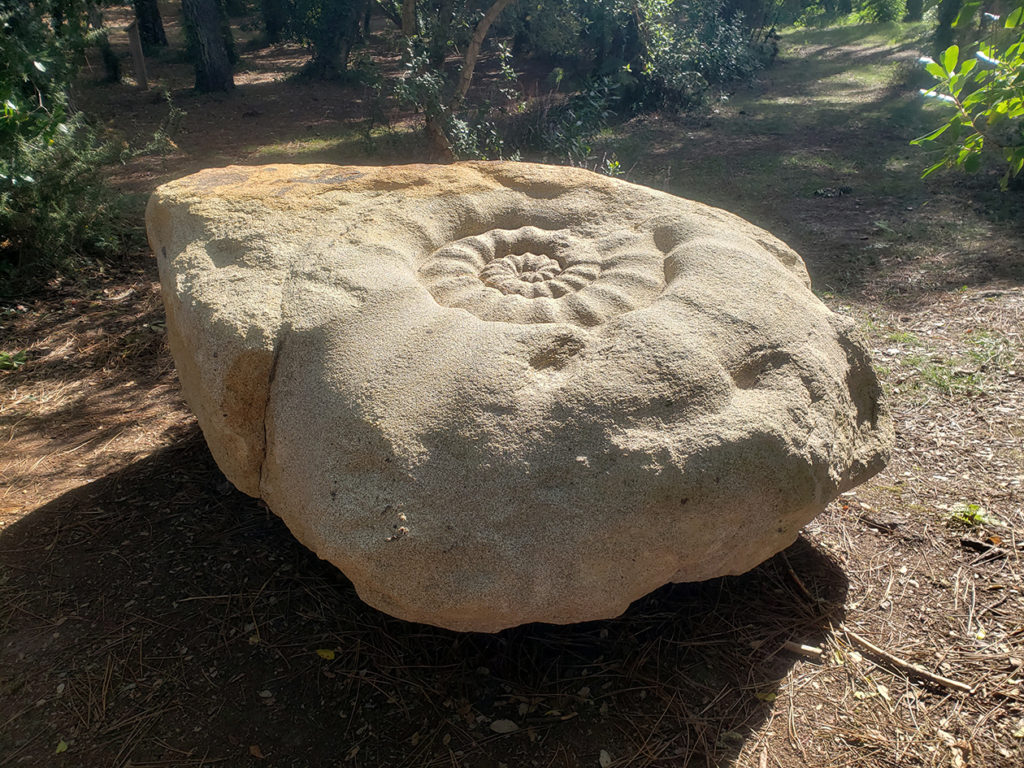
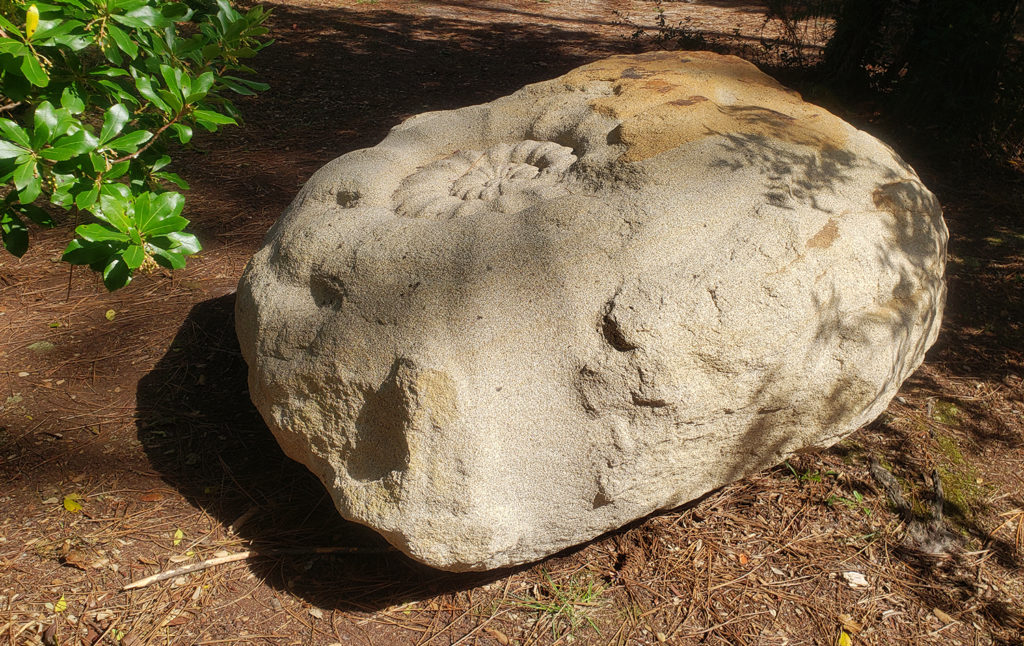
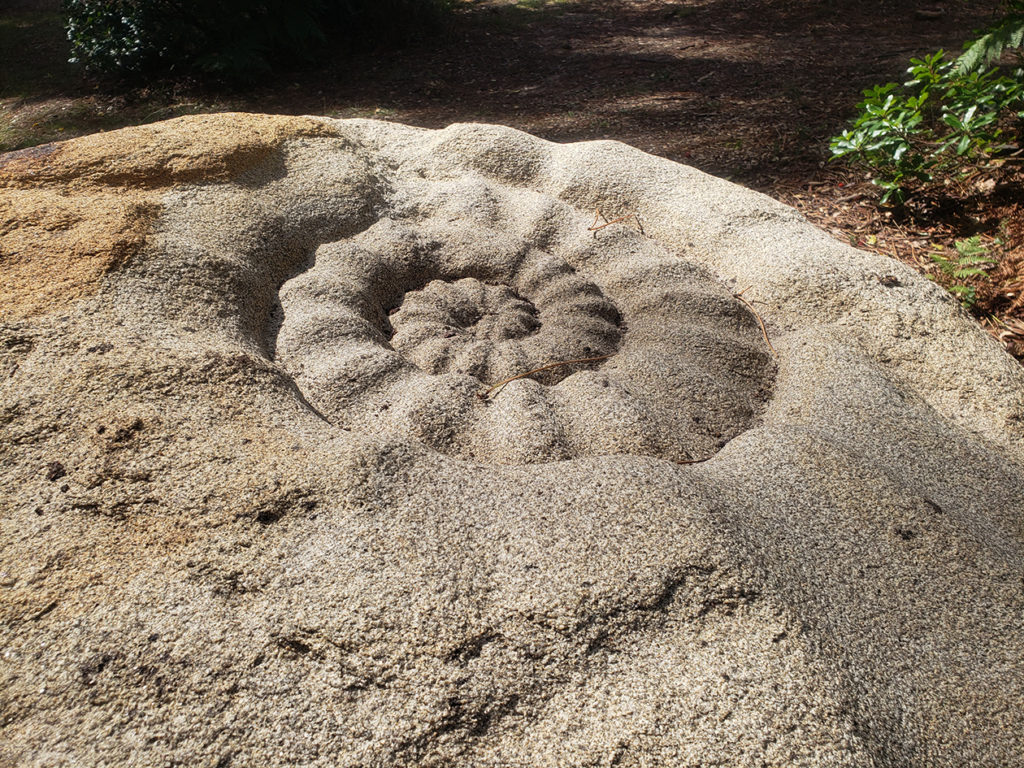
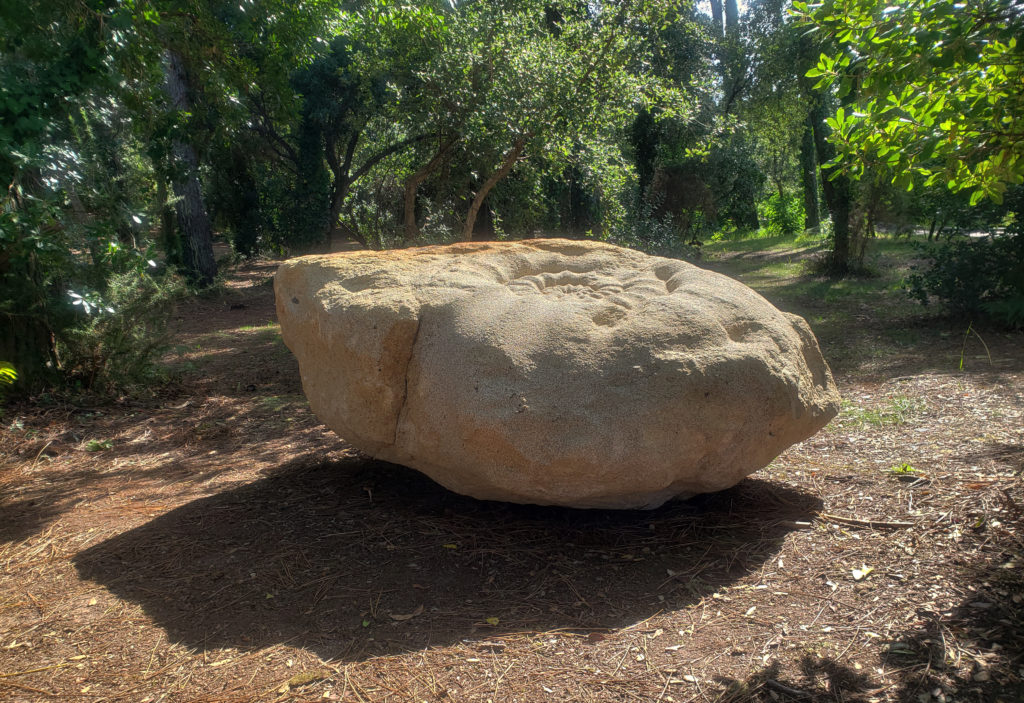
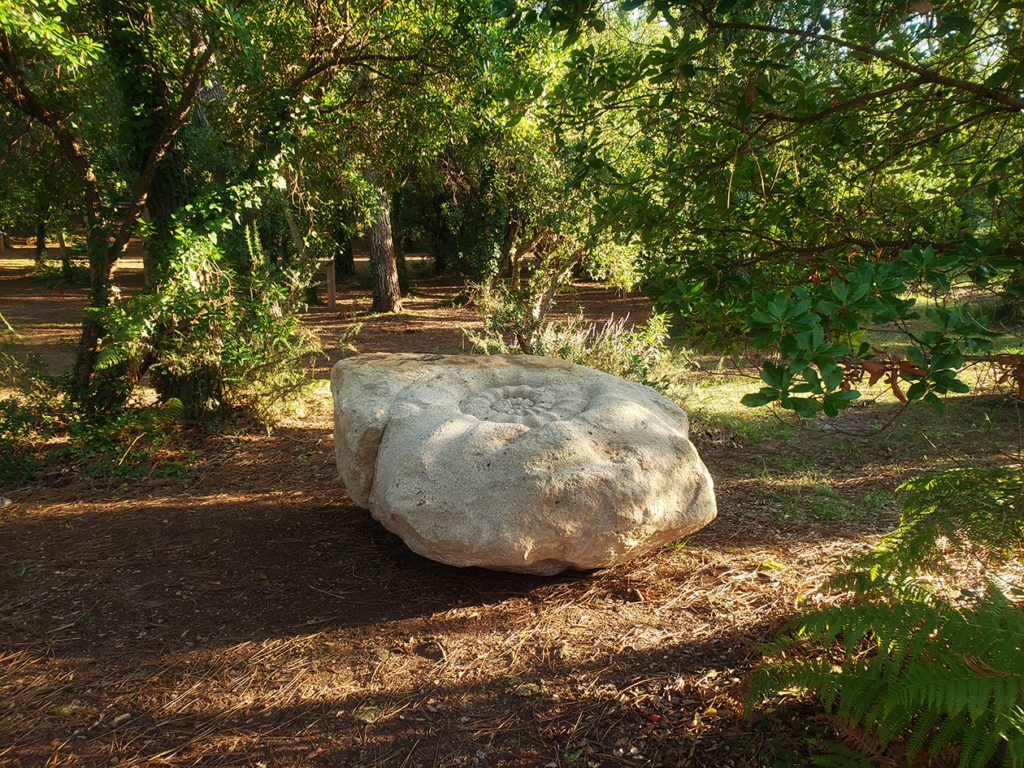
Archive photographs of the production:
